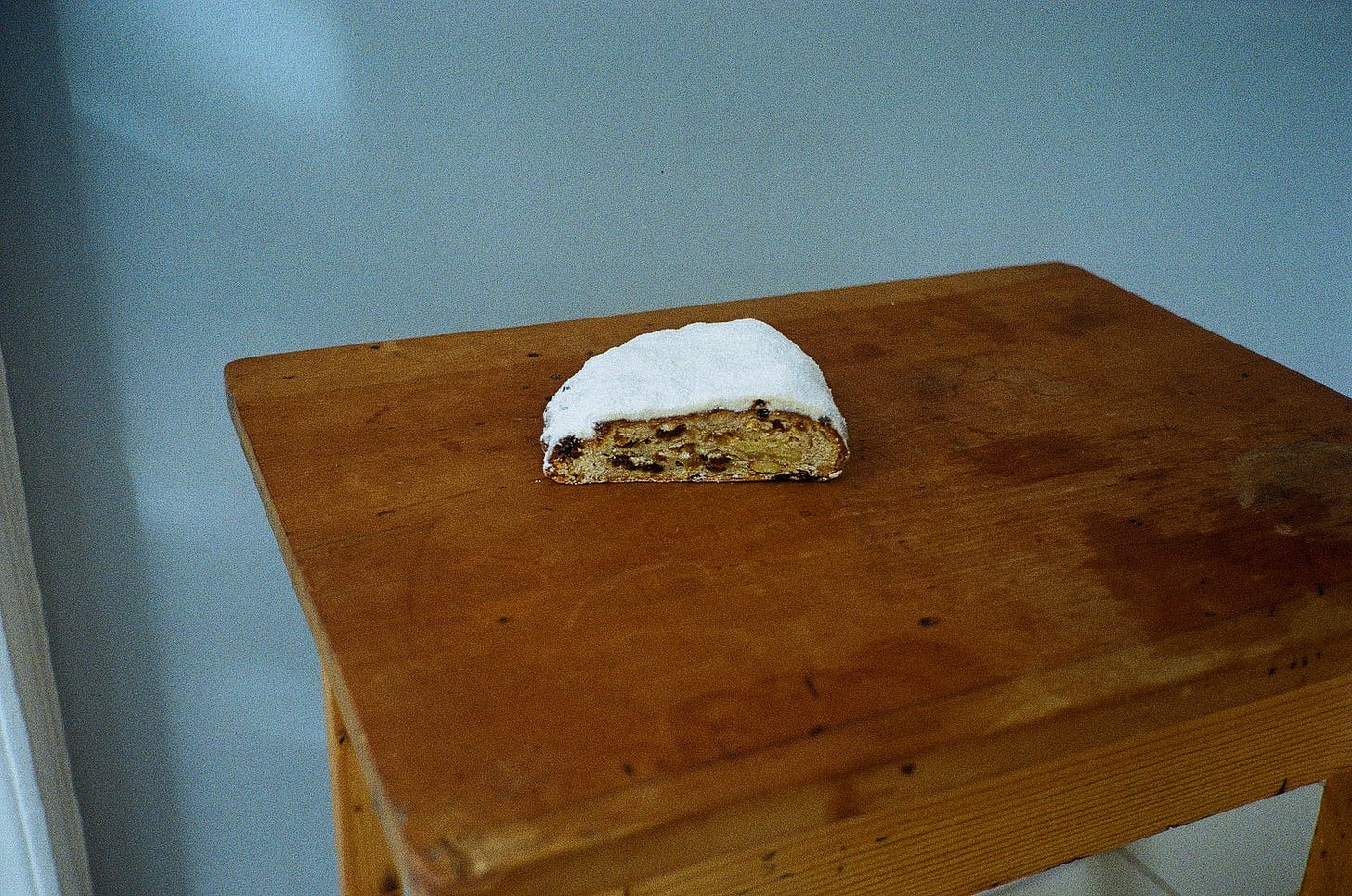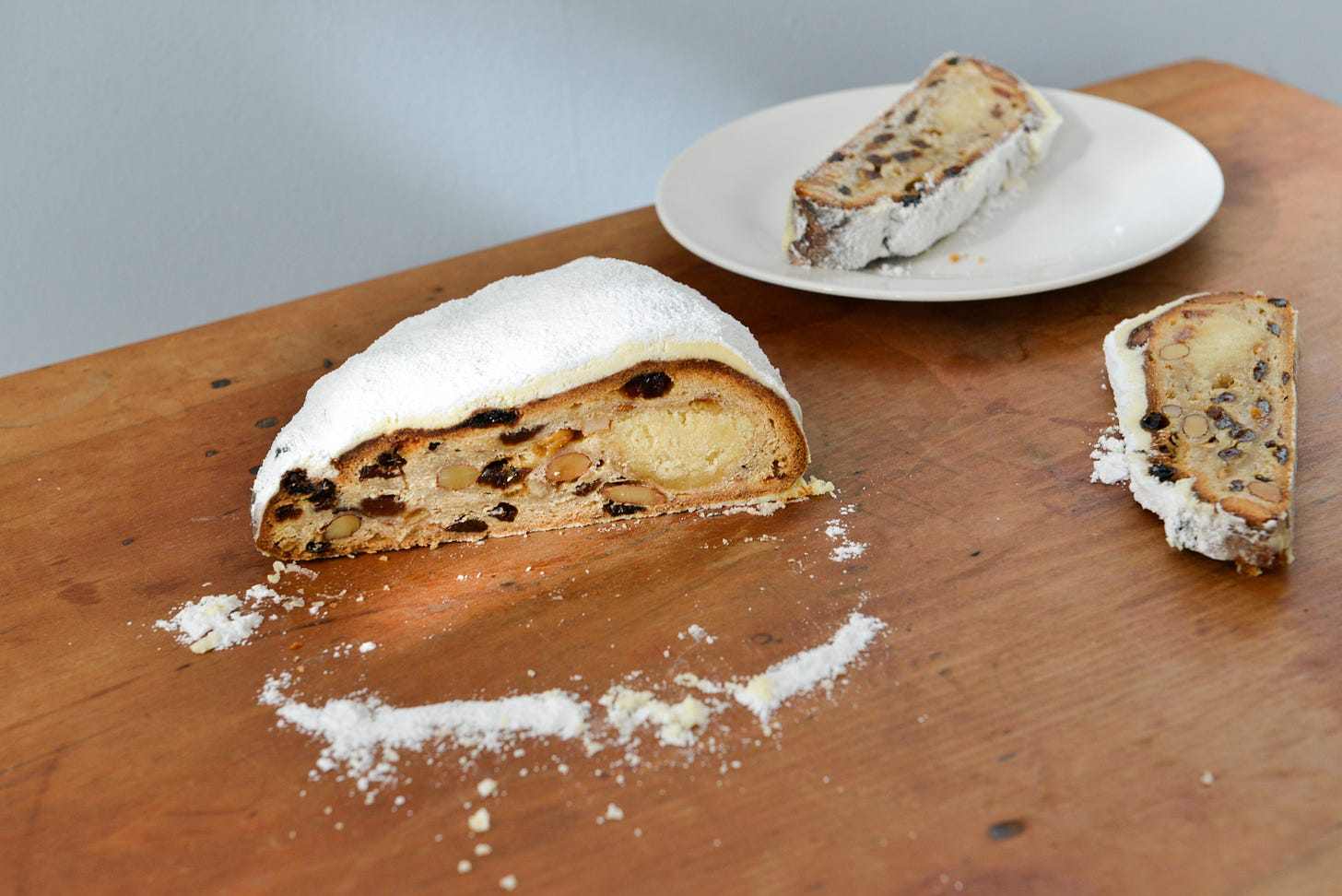The Stollen Project
A conversation with Eleni Wittbrodt
As it’s now November, I’m hoping it is forgivable to start talking about Christmas - and more specifically sweet treats that come into their own at this time of year. There’s something about winter bakes that just hit differently - they are a real cosseting source, a celebration of spice, solace and warmth and an excuse to invite friends and family over and hibernate together from the cold wind and rain. Our Substack today specifically spotlights Stollen and Schnee Stollen, a side-project run by visual artist Eleni Wittbrodt. We chatted over the phone last week and it was a joy to hear her speak about Stollen - it’s history, the process of making it and above all, what it means to her.
A brief history of Stollen
For those that are less familiar with this bake, Stollen is a traditional German Christmas cake - yeasted and specked with nuts, raisins, currents, candied orange, lemon peel and spice, with a ribbon of marzipan running through the centre. The fruit is often macerated in rum or brandy and it sits blanketed under a deep coating of icing sugar, covering its craggy surface. Less rich than the French Buche de Noel and firmer than the Italian panettone, the cake and marzipan are entwined in the oven, concealing the almondy treasure within.
Stollen has a really rich and fascinating history, and is thought to have originated in Dresden, Germany in the 1400’s. Originally, it was a hard bread eaten at Advent - it was made with oil rather than butter due to the latter being banned by the Catholic Church at that time. During the fifteenth century, Prince Elector Ernst and his brother, the Duke wrote a letter addressed to the Pope, seeking permission to use butter in Stollen. In 1490 (several Pope’s later), Pope Innocent VIII sent The Butter Letter to the Prince and his brother, approving this request. The letter set out conditions by which butter could be used - notably payments for everyone (except for the royal family) that would go towards the upkeep of Freiburg Minster. Fruit, almonds, lemon zest, spices and rum were added later when Saxony became protestant.
It’s also a bake steeped in tradition - every year on the Saturday before Advent a giant Stollen is paraded down the Schloßplatz in Dresden. It’s accompanied by soldiers and much of Dresden turn out to watch the carthorses pulling a cake the size of a small, snow-laden car through the Old Town. The fruit loaf, is sliced into thousands of pieces by a copy of the ancient Dresden Stollen Knife - the pieces are handed out into the crow in aid of a charity that supports young bakers.
About Schnee Stollen
Schnee is the German word for snow and so is very fitting for Stollen, which is blanketed under a thick coating of icing sugar - primarily to preserve it. The 750g loafs Eleni makes are not quite as big as the giant stollen that’s paraded down the Schloßplatz (!) but they are carefully made, using hand-selected ingredients that are both regional and organic. This includes whisky, which she uses in place of rum or brandy, to soak the dried fruit and citrus peel, and cultured butter, sourced from Edinburgh Butter Co. The Stollen is 100% naturally leavened sourdough and is studded with home-made marzipan.
As you may have guessed, Eleni is originally from Germany but relocated to Scotland in 2018 when she came to study Fine Art. For most of the year, she is an artist, but in winter, her focus shifts to baking stollen. When we spoke over the phone, she explained that as she mostly does project work, being able to have another flexible source of income on the side is very valuable in quieter periods, and also an opportunity to continue dedicating time to this other thing that she loves doing – baking. Over the past few years, Eleni has worked in some of the best bakeries in Glasgow. She told me, ‘I have a generous network of bakeries in Glasgow - Kaf, Outlier and two eight seven’ which have allowed her to learn so much about sourdough and baking more generally. She continued, ‘When I started I was a good home-baker but I didn’t know much about the processes. It’s been such a great learning curve, especially with sourdough - I found that so hard to learn at home. It all made sense once I was in a professional bakery, and could see how it works.’ She spoke of how the Stollen project, brings together the skills she has learnt from her time at these bakeries and her interest in seasonality, but also gives her the opportunity to share ‘a bit of her German culture’ by creating the ‘highlight of German baking’. Stollen is something she greatly misses having moved away from Germany and she told me how it now feels extra special when she gets to eat it and how it is something that is just synonymous with Christmas. Having made stollen for friends for a number of years, Eleni is taking a leap of faith and opening it up to the public for the first time this year.
I asked Eleni whether her Stollen recipe is a family one and she explained, ‘In Germany, you can get different kinds so most families have their own recipes, especially in the east.’ She continued, ‘I’m from the west of Germany so there’s not a lot of Stollen baking as such’. As a result, Eleni has developed her own recipe by comparing a number of traditional recipes and creating one that is a sourdough only process. She told me, ‘we all know the benefits of sourdough - it has a lot more flavour in it’ and that a sourdough-base is fitting, given that Stollen is a real labour of love and something special that you only make once a year. She continued, ‘It feels very appropriate to invest time into it’.
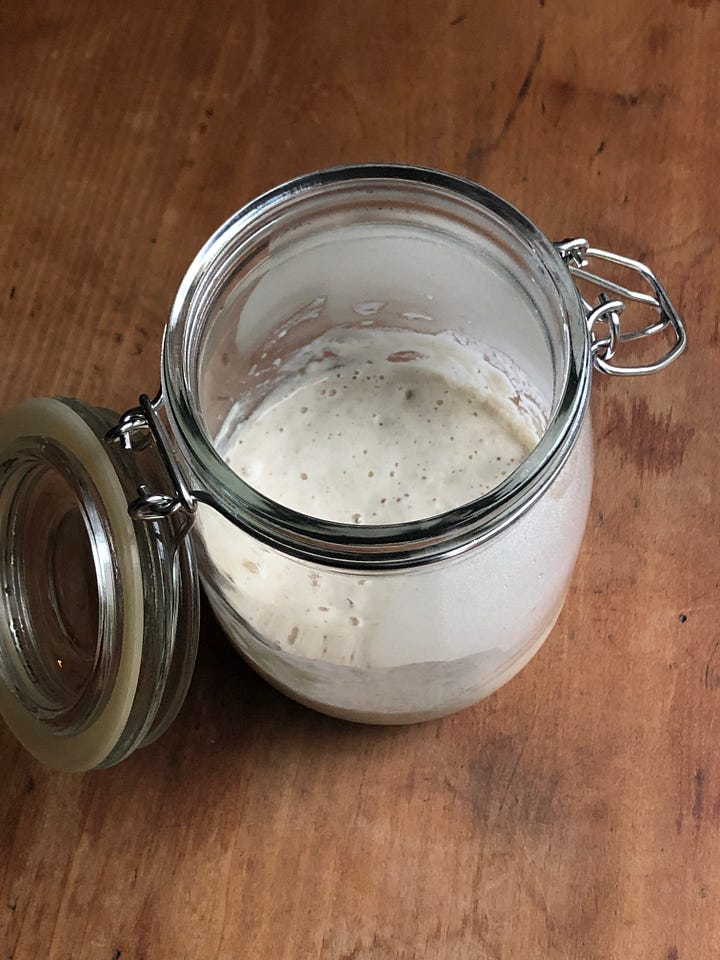
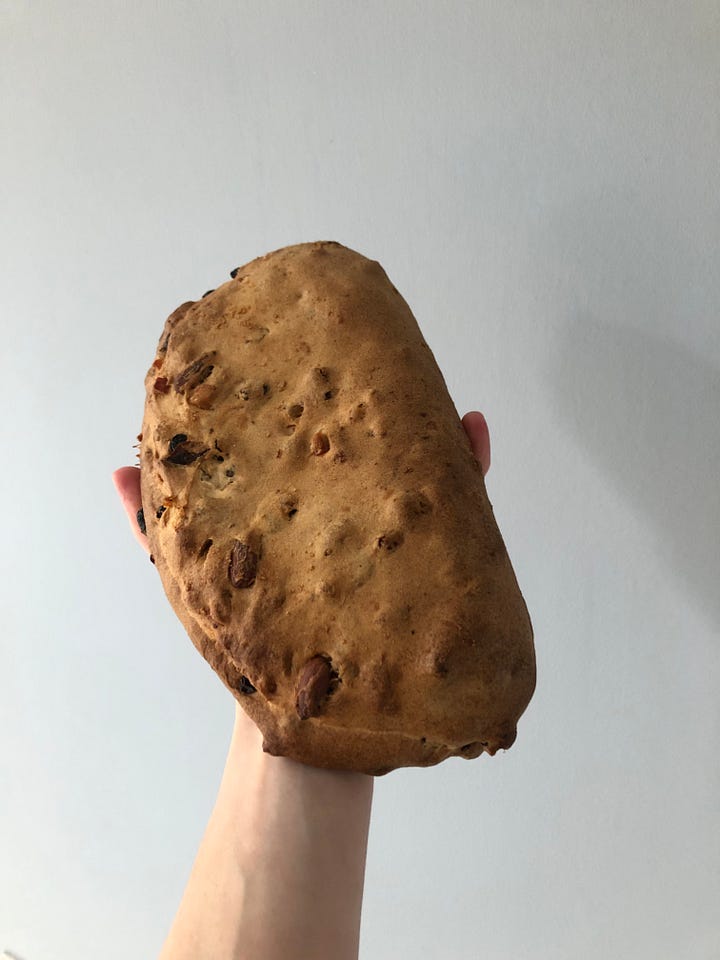
As you might expect, the most intense part of creating Stollen is the feeding of the sourdough starter. Eleni explained, ‘You want the yeast bacteria to develop in the starter and it needs to be quite a firm starter so in the lead up to baking, you need to feed the starter every four hours which takes a while so it just requires some planning.’ The mixing process is fairly straightforward, Eleni compared it to making a regular bread dough that you rest overnight and then shape and bake the following morning. Once baked, stollen has a fantastic shelf-life, stored in a tin or wrapped at room temperature, it will easily keep for twelve weeks (interestingly, many Germans will still eat Stollen at Easter).
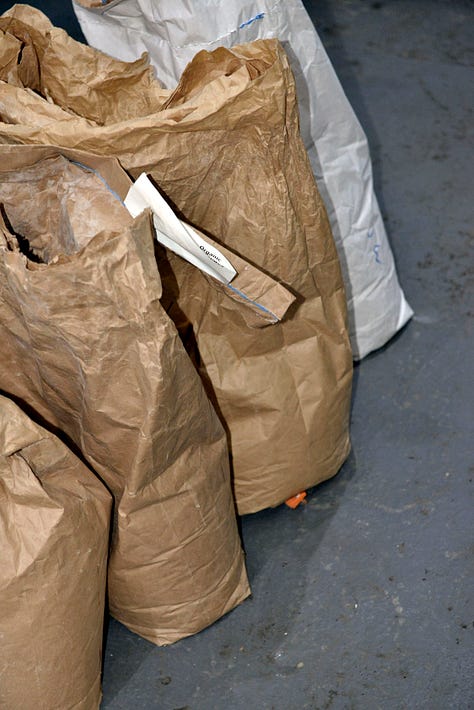
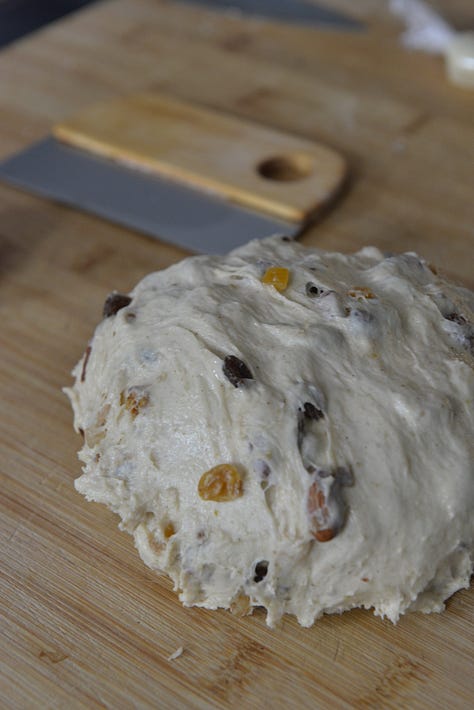

I asked Eleni if there’s a secret to making good Stollen. She took some time to thoughtfully answer and told me, ‘Firstly, I think sourcing good butter because it makes up a big part of the dough. But in general, I think it’s really important to source the best ingredients you can find as it’s one special thing you bake only once a year.’ ‘And then the second’, she added, ‘is having the patience to rest it properly. I am sharing my flat and my flat-mate found it so hard to wait those two weeks. I made a test-bake and we ate it straight away and it was still tasty but now that I am really observing taste-notes and how the flavours are developing, I was really blown away by the difference of the one we ate straight away and the one we waited two weeks before eating.’
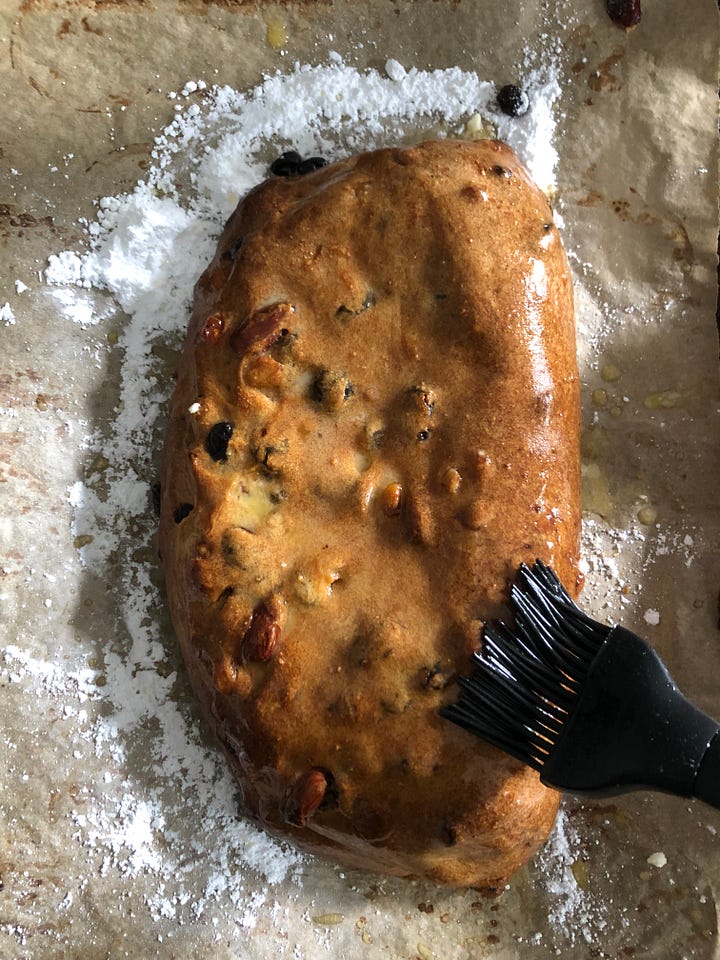
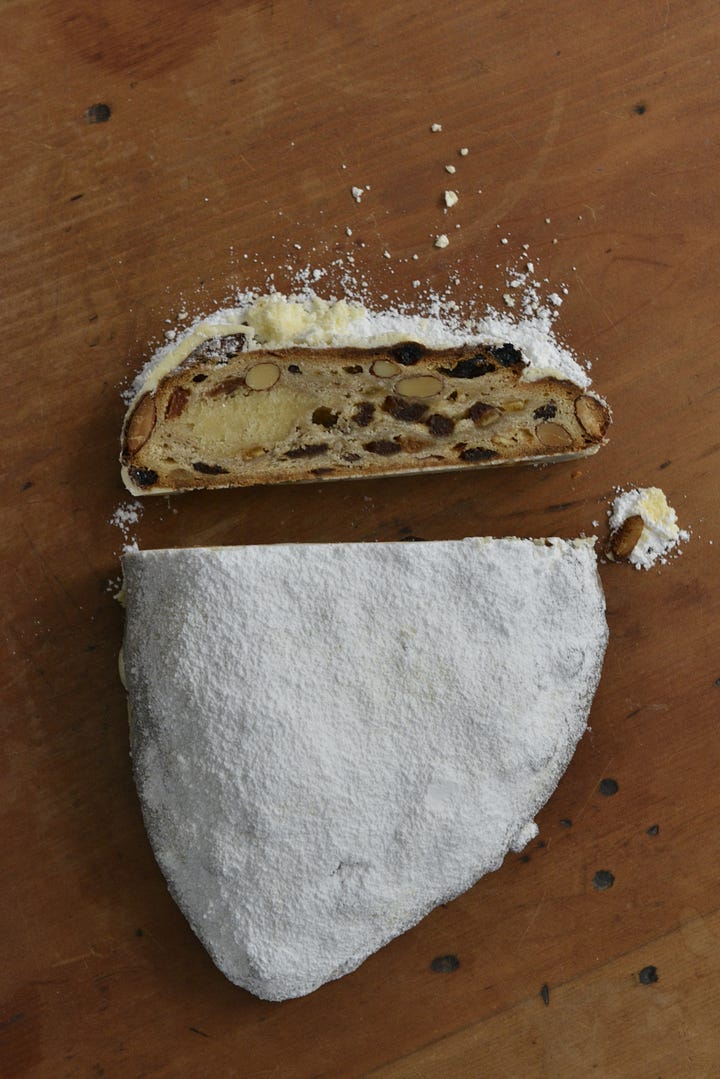
She explained that Stollen is so much about the anticipation, something to be enjoyed slowly and over a longer period of time - a slice here and there, or shared with friends who pop in for a tea or coffee. Here I asked Eleni how she enjoys eating her Stollen and she told me, ‘I’m a big fan of coffee, you could put anything with coffee and I would say that’s a lovely combination. But a slice of Stollen is lovely with a coffee. Some people toast it and put jam on it but I don’t think you actually need it.'
I finished by asking Eleni if there’s any other festive bakes that she’s fond of, to which she laughed saying, ‘Oh don’t even get me started.’ She explained that in Germany it’s traditional to meet up with friends and bake lots and lots of biscuits. The idea is that every friend brings one recipe and then in the end you have 5 different biscuits and you make little boxes with different sorts of biscuits and give it away to people. She told me, ‘I love all the biscuits, Vanillekipferl which are a crescent shaped vanilla biscuit. When I left Kaf, I gave them my recipe so they regularly bake that during winter now which is wonderful. Then there’s Lebkuchen and cinnamon stars, I love all of it.’ She finished by saying, ‘I think Scotland could be so open to these bakes because it gets so dark and cold here in winter - having something to keep you going and a reason to get together is really valuable.’
A big thank you to Eleni for taking the time to speak with me (and kick-starting my Christmas excitement!). Pre-orders are now open via her online shop with options to collect from Glasgow as well as mail delivery. There will a few places that will have Schnee Stollen stocked on their counters - drop Eleni a note to find out more about where you can find her Schnee Stollen.


